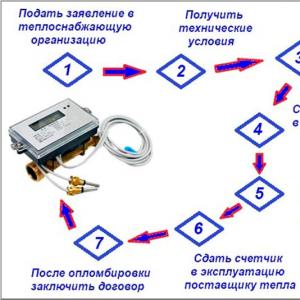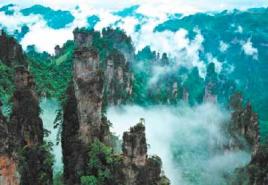Wood processing by firing the Italian way. Burnt wood for decoration: advantages and do-it-yourself manufacturing. The use of burnt wood in interiors
Now, as before, natural is widely used:, decorative elements and much more. In order for the tree to last for a long time, it needs special treatment with antibacterial, anti-mold and impregnations. Now, chemicals are used for wood processing, but the old proven methods are no less popular, thanks to which, built in the century before last, they still stand to this day. An editorial review of the site will tell you why such a processing method as firing is needed, we will talk about the advantages and disadvantages of burnt wood as an independent building material.
Read in the article
Technology and the need for wood processing by fire

There are various lumber from the negative impact of the external environment, but not all of them are available for use in normal home conditions. The most affordable option is to burn wood with an open fire.

Heat treatment of wood was carried out in ancient Japan using a technology called “cedar languishing”. The wood was burned on fires, carbon deposits were removed, washed and impregnated with tung oil. After firing, the wood acquired shine and an amazing noble black and silver hue. The operating time of wood after heat treatment increased to 80 years.

The aesthetic appearance and characteristics of fired lumber in most cases depend on the method and depth of heat treatment. There are three degrees of firing:
- Full. Occurs in special ovens at 400°C. Material that has undergone such processing is used quite rarely, mainly for production.
- Deep. This technology is used to process lumber that has already been in use. After this type of processing, the material acquires an expressive surface.
- Surface. The most popular method, which is carried out with a blowtorch or gas burner.

Advantages and disadvantages of firing lumber
Processing wood at home with an open flame has its advantages:
- the help of third-party specialists is not required;
- after the firing process, the lumber receives increased fire resistance;
- during heat treatment of natural wood, a favorable environment for various pathogens is destroyed, which helps prevent destruction and decay.

How to burn wood yourself
Wood processing at home, in principle, does not present big problems, especially if you follow certain requirements and choose the right firing method. We offer you to get acquainted with some of the nuances of firing lumber.

The choice of wood species
Almost any type of wood is suitable for heat treatment, but true admirers of beauty prefer to use lumber with an unusual and expressive texture. For firing wood according to the original Japanese technology, only cedar was used. An equally interesting effect is achieved when firing beech and hornbeam, since due to the significant density of these wood species, only the top layer burns through. Poplar, alder and maple have a distinct texture after decorative fire treatment, while larch and walnut show additional small and unique patterns. Those who like to take a steam bath in the sauna will appreciate the burnt birch board, because after processing its surface becomes more porous and after heating it does not burn the skin.

Preparation of wood for heat treatment
Lumber before annealing must be carefully prepared. The wood surface must be clean, smooth and dry. should not exceed 13-15%, otherwise, when exposed to high temperatures, various surface defects may occur, and this will significantly worsen the quality of the decorative finish. Also, the material should have been completely, because after heat treatment they will appear in the form of spots.

Note! It is best to use freshly treated wood for heat treatment, which has not yet had time to change its texture and color. If this condition is not met, the grinding work will have to be carried out again.
Burning wood with a blowtorch
If it is decided to carry out wood processing, then you should wait until the nozzle of the device turns red and the fire becomes evenly purple. In order for the fired wood to meet all standards, the flame must be directed perpendicular to the board, and the end of the torch should barely touch the material being processed. The lit lamp must be moved slowly at the same speed, not forgetting the contrast of the emerging wood pattern. When the fired boards are installed, they must be treated with drying oil, nitro or urea-formaldehyde varnishes.

Burning wood with a gas burner
By means of a gas burner, only light heat treatment of natural wood is performed. This is due to the fact that when the material is deeply burned, it is not possible to achieve uniformity. During operation, the wood burning burner should only lightly touch the flame with the lumber being processed. The speed of movement of the gas burner should be the same as when painting with a brush. The depth of wood processing is controlled by the degree of change in the contrast of the pattern.

After firing the parts, their surfaces must be moistened with a spray gun. The length of time between fire treatment and spraying should be the same for all areas of wood. When the burnt wood has cooled, soot is removed from it with the help of special brushes made of brass wire. Additionally, you can perform or brushing.

Does burnt wood need additional protection?
After removing carbon deposits and grinding the burnt wood, they proceed to its fastening or further processing. Experts recommend processing lumber after firing with oil. A minimum of 2 coats of artificial nitrocellulose varnish should be applied to the burned board. To cover the lumber to be used for, only synthetic wax dissolved in turpentine at a temperature of 40-45 ° C should be used. This is due to the fact that natural wax does not lose its stickiness.

Where is lumber used after firing
The wood that has gone through the firing process is widely used in the creation of interiors and facade works. This is due to the fact that after treatment with fire, the decorative and operational characteristics of wood are significantly improved. You can buy burnt wood or do the necessary processing yourself.

The use of burnt wood in interiors
Due to the fact that the heat treatment of lumber on an industrial scale became possible, they began to be widely used in decoration. The wood that has gone through the burning process is used for wall decoration, creating original flooring, and furniture. Burnt wood furniture, in combination with similarly processed wood finishing materials, allows you to create a unique complex and harmony in the created interior.
1 of 6





Wooden buildings without additional protection cannot boast of significant durability. Traces of decay can appear on them quite quickly, so you have to apply various technologies against the development of mold and microbes. Many of them are not environmentally friendly, and such wood is used only outdoors. Burning wood is an absolutely safe method that was invented many years ago. It allows you to preserve the natural qualities of the material for a long time and give it an unusual look.
Wood burning technology: historical background
Burnt wood has long been popular in some countries, while in others it is just beginning to come into fashion. Japan is considered the birthplace of the technique, where the so-called languishing of cedar was used: they burned the tree on fires, then removed the soot, washed it and applied tung oil. This made it possible to give the material a shine, a noble silver-black hue and increase its service life up to 80 years. The history of the technology dates back to the beginning of the 15th century, when the unique properties of the resulting wood were accidentally noted during the burning of cedar plantations for firefighting purposes.
On the island of Naosami in Japan, burnt wood is still widely used for the construction of various objects, and is also widely used for interior decoration. The technique has long been known in Europe and America, where it was practiced along with tarnishing - soaking lumber with hot resin. If earlier wood blanks were burned with an open flame using torches, now special vacuum furnaces are used for this purpose.
As the subcrustal layers grow, new pores form in the wood. This causes the death of fibrous cells and leads to an increase in the porosity of the structure. The result is an invariable property of any wood - hygroscopicity, or the ability to absorb and release water when the humidity of the environment changes.
The wood has an uneven texture due to the presence of cellulose polymers, resins, sugars and other organic components. Also, the material has a high flammability, a tendency to multiply fungi and other microorganisms that constantly live inside and begin to actively multiply at the slightest dampness.
To reduce all the listed disadvantages of wood, while leaving it environmentally friendly, the firing technology using autoclave heating (thermolysis) or creosote cooking is capable.
During the work, the material is heated up to +300…+400 degrees, which allows destroying unstable hemicellulose formations. Since the latter are the cause of the appearance of combustible pyrolysis gases, their removal immediately reduces the flammability of the tree.
Wood burning at home has a less pronounced effect and removes fewer unstable compounds. However, this is sufficient to improve the performance properties of the material. Also, firing leads to partial clogging of pores with resin and soot, narrowing of the channels in the outer layer of wood, so bacteria, sunlight, and moisture will practically not penetrate inside. A loose tree after firing acquires fire-fighting properties, becomes immune to decay, and is less destroyed by precipitation and wind.
Firing types
The quality and appearance of the burnt wood may vary depending on the specific technology that has been applied. According to the depth of exposure, the following types of firing are distinguished:
- Full. It is the firing of lumber at a temperature of about +400 degrees in a vacuum furnace. Such wood is not in great demand, because its volume is reduced by 2 times, and initially high strength characteristics decrease over time. Usually, the wood after full roasting is used for the manufacture of expensive furniture, decorative elements and other piece goods.
- Deep. A popular type of heat treatment of wood. It can be used in relation to new and used material, allows you to artificially age the boards, beautifully decorate the timber. During firing in open kilns, the entire thickness of the lumber is evenly heated, and the surface becomes dark (from graphite to coal). Permissible depth of burning wood - 20 mm.
- Surface. Most often used at home, it implies a firing depth of the material up to 5 mm. The method is easily implemented in the presence of a gas burner or a conventional blowtorch.
Advantages and disadvantages of firing lumber
The main advantage of the technique is that it does not require the application of impregnations, antiseptics, which are sometimes not environmentally friendly and may even contain toxic components. Other benefits of wood burning:
- the possibility of doing it yourself;
- no need for special skills, expensive tools;
- protection of the material from wind, moisture, mold, microbes, insects, ultraviolet;
- profitability;
- giving fire safety (re-ignition is almost impossible);
- reliable prevention of decay;
- ensure wear resistance, increase service life.
The disadvantages include only the laboriousness of the process, which is carried out without the presence of industrial equipment, because you have to manually burn each board, then clean and process it. Nevertheless, the unique texture, original appearance and unique technical characteristics of burnt wood eliminate all possible shortcomings and increase the popularity of the technology.
Roasting at home - is it possible?
To burn the wood yourself, you need to strictly adhere to the advice of specialists and the algorithm for performing work. Since there are no vacuum ovens at home, you need to prepare more affordable fixtures in advance. As a source of flame for firing, you can use:
- gas burner;
- blowtorch;
- building hair dryer;
- gas cylinder with nozzle.
You will also need tools for cleaning wood. If you plan to work with small bars, planks, you can take a metal brush. For large lumber, it is better to prepare a grinder, grinder, drill with an appropriate nozzle. To make it convenient to brush over the remnants of burning, you need to buy a flute (a brush with soft bristles).
Firing is carried out in the open air away from objects that can catch fire, especially from paper, rags, textiles, cardboard, plywood. Be sure to take away any solutions, formulations and other chemicals.
In order to comply with safety regulations, they work in gloves, goggles, and keep a fire extinguisher nearby. It is desirable to work on a metal or stone surface that is not afraid of heat.
The choice of wood species for firing and material requirements
Hardwood (cherry, alder, etc.) must not be fired. In some cases, beech and hornbeam are fired, as they have sufficient density and are able to withstand heat. Work is often carried out with conifers. Cedar is best suited for this purpose, you can also use spruce, pine, larch.
Conifers are distinguished by a variety of patterns, and after firing they acquire a unique structure. The more knots, complex bends were on the wood, the more decorative the result will be. It is important that the tree is damp, but contain no more than 15% moisture. It is also possible to burn already finished wooden products, coniferous veneer.
Preparing the material for firing
Fresh wood does not have to be carefully prepared for processing, because the flame will remove all the bumps, acting on the principle of grinding. It is only necessary to cut off large ledges, knots, and also remove the resin - if its streaks light up during operation, the whole effect will be spoiled. Wood that is too wet will have to be dried, otherwise moisture will deform it during evaporation, chips and cracks will appear.
Old wood is prepared more carefully. It is necessary to remove the remnants of paint, varnish from it, to carry out the skinning, so that no stains form during the firing and there is no fire. If the tree was previously impregnated with wood stain, it can be fired according to the general rules. Lumber coated with drying oil is not subject to firing.
Processing wood with a blowtorch
For this work option, you will need a blowtorch, which was previously heated to the maximum. If the heating is insufficient, a thick layer of soot will appear on the surface. The fire is directed strictly perpendicular to the position of the boards, moving the lamp slowly, evenly, paying attention to the change in color and structure of the material. The exposure time is chosen independently: it depends on the desired effect and the thickness of the workpiece.
After the firing is completed, the primary grinding of the product is carried out. To do this, the boards are laid in turn on a stool or other convenient stand, carefully processed with a grinder, then the dirt is brushed off with a brush. At the end of the work, impregnation with varnish, drying oil is done.
Burning wood with a gas burner
For the master, working with a burner is considered more convenient and easier than with a blowtorch. The effect will be more attractive, since the flame of the burner penetrates deeper into the structure of the tree. But during the firing process, it is important to ensure that the fire is not too close to the lumber, otherwise burnt spots will remain on them. A strong yellow flame for firing is unacceptable. It should be calm, oblong and bluish.
Start at the top of the board. The burner is carried over the product like painting with a brush: smoothly, evenly. Repeat the procedure 2-3 times, then spray the material with water from a spray bottle. As the wood cools, it is processed, removing the loose burnt layer. Carry out the grinder only along the fibers, so as not to damage them. At the same time, a flute is used to sweep away soot, especially carefully removing deep-seated particles.
The quality of work is checked by wiping the wood with a napkin. If you want to give the material an antique look, brushing is then carried out. Also, for artificial aging of wood, it is possible to apply special pigments or special finishing coatings.
Does burnt wood need additional protection?
Burnt wood has many advantages, and one of them is increased strength. Therefore, the material can be left in its original form after removing the remnants of soot. However, experienced craftsmen always carry out additional wood processing, because after it the level of security will be even higher.
Usually, after firing, the product or lumber is treated with oil, which helps to improve the decorative and operational properties of the tree. After that, a transparent nitrocellulose varnish with protective properties or a mixture of varnish with artificial wax is most often applied. For the processing of facade wood, a solution of synthetic wax in turpentine is used.
The choice of oil for wood
Linseed, hemp or tung oil is the ideal finish for burnt clapboard or other wood for interior decoration. The liquid is applied with a brush or spray gun (depending on the scale of work). You can use tinted synthetic oils that give the tree a more noble look, imitating valuable species. An excellent result is obtained by a mixture of colorless wax and oil, which helps to emphasize the structure of the tree and protect it from external damage.
The use of burnt lumber
Finished fired lumber and its products are highly valued by builders and designers. Doors, windows, gazebos and terraces, benches and tables, garden furniture and technical buildings are made from such wood. After firing, the wood is perfect for building fences, other fences, decorating floors and balconies, and exterior decoration of houses.
Flame treated wood is great for many interior styles, especially for country. After special varnishing or staining, it can be used in retro, vintage, Provence and other styles, which involve the use of artificially aged furniture and decor items. Most often in the interiors of apartments and residential buildings you can see such products made of burnt wood:
- caskets;
- panel;
- baguettes;
- chairs and tables;
- dressers;
- lockers.
In addition, the full decoration of the walls with burnt wood or the design of beams and ceilings looks beautiful in the design of the premises. The unique look of the material will provide a luxurious look to the whole house.
Creation of facades from burnt boards
When creating facades of brick or wooden houses, such wood is used very often. After firing, the material becomes stronger and more durable, therefore, with additional varnishing or oil impregnation, it will serve without complaints for many years. Aesthetics, originality and environmental friendliness are the main qualities of burnt wood, making it one of the most popular materials in construction.
The processing of wood by firing makes it possible to obtain a tree with a more pronounced structure, and the material becomes less susceptible to burning, decay, insect damage and ultraviolet radiation. That is, both aesthetically and practically.
We invite you to talk about why wood is fired, how it can be fired, what kind of wood to take for this and how to process it after firing.
Burning wood: why do it?
Today, the most common way to protect wood from external factors are chemicals - all kinds of impregnations. But chemistry is chemistry, and people often have a desire to process a tree without, in fact, using poisons. One of these methods is the burning of wood.
The essence of firing is that under the influence of high temperature in the outer layer of the tree during the pyrolysis process, the fiber channels are narrowed, clogged with combustion products and resins. Due to this, the top layer of wood is compacted and becomes almost inaccessible to fire, fungi, mold, insects, and sunlight.
The resulting charred layer, of course, must be removed. For small crafts, this is done manually with metal hard brushes; for larger ones, they use special attachments for grinders or drills. And here comes the second pleasant wood burning quality: aged wood effect. In fact, burning a tree, followed by brushing, is, that is, artificial aging of wood. And although firing is not an obligatory component of the brushing process, many masters resort to it.
As a result, all kinds of caskets, picture frames, panels can be made from such wood, used in construction as logs, facade boards, beams, trim, windows and doors, material for the manufacture of wells, toilets, dog kennels, gazebos, etc. In the latter case burning wood with a gas burner must be carried out before assembling the structure. Firstly, it is not safe to burn a house, and it will not be so easy to eliminate a fire, if one occurs. Secondly, it is not convenient to carry out subsequent cleaning of burnt wood on an already finished structure. You will spend a lot of effort, but carefully scraping off the burnt layers, especially at the junction of wood elements, will not work.


Wood burning: what kind of wood to take?
As for the quality of wood, here is the rare case when the third grade is not a defect, but what we need. When soft charred fibers are brushed after firing, depressions form in their place, and harder layers turn into ridges. This is the only way to get a textured, embossed, contrasting material. To do this, you need to choose a blank with: knots, twists, eyes, curls (but if we are talking about wood for construction work, then beauty can be sacrificed here).
There is no need to pre-grind or somehow prepare the board - firing will remove all flaws, and the decorative properties of wood are given after firing.
Although you can burn not only raw wood. For example, if you have a chair, table or fence covered with stain, and you would like to emphasize the texture of the wood that the impregnation “eats”, wood firing is also appropriate. Moreover, not only wood, but also chipboard can be fired. Recall that coniferous woods are fired, so even veneer must be pine, spruce, etc.
Wood burning technology
Before, how to burn wood take precautions. After all, you will work with open fire. An open balcony is also suitable for small bars for crafts, but with full-fledged boards it is better to work in the open.
You can burn wood:
- gas burner
- gasoline blowtorch
- a conventional gas cylinder with a nozzle
- building hair dryer
Those who carry out firing and brushing wood on a small scale - for crafts, have long fallen in love with dremel. It is small, convenient, and in the household a “mini-drill” is useful not only for burning wood.
In addition to wood and a burner, for firing we need a hard brush and a soft, wide brush for sweeping the cinders (flutes).

A brush with metal bristles is suitable for stripping small bars. For large-scale work, it is better to arm yourself with a grinder, drill or grinder with special nozzles.
1. Directly firing wood
Calmly, evenly run the burner over the wood so that there are no charred or “underburned” areas.
 You can choose the degree of roasting according to your taste. If the firing is weak, then it will be possible to go through the burner again later, if you fry it too much, you just have to work harder when removing soot, the pattern will be more contrasting. The main thing is the uniformity of firing.
You can choose the degree of roasting according to your taste. If the firing is weak, then it will be possible to go through the burner again later, if you fry it too much, you just have to work harder when removing soot, the pattern will be more contrasting. The main thing is the uniformity of firing.
 If your wood isn't, it's almost certain that it will either have streaks or tar pockets that can catch fire. Extinguish the fire immediately, otherwise an unsightly dark spot will form in this place. Firing one standard board will take up to 10 minutes.
If your wood isn't, it's almost certain that it will either have streaks or tar pockets that can catch fire. Extinguish the fire immediately, otherwise an unsightly dark spot will form in this place. Firing one standard board will take up to 10 minutes.

2. Scraping sawdust
We take a hard metal brush - such as for removing paint - and begin to conduct exclusively along the fibers. Instead of a brush, you can take a brush grinder, drill or grinder with special nozzles. Thus, you will “stir up” the burnt soft tissues in the hollows of the wood. Having practiced a little with a brush, take the flute and take it out, knock it out, pick out the sawdust. This should be done as if “against the pile”, otherwise these dust particles will simply clog deeper into the cavities.

Brushing wood after firing with a brush grinder
3. We bring to the desired state
Alternating between brush and flute, scrape the wood grain-wise with strong, long strokes. You can not brush perpendicular to the fibers - hard bristles will leave a mark and ruin the whole pattern. When to stop is up to you, based on your aesthetic preferences. By firing wood and brushing, material can be obtained from gray, jet black to chocolate brown and golden hues.

Wood burning: what's next?
In general, you can stop at the firing of wood, and then glue, build, cut ... This is a full-fledged building and decorative material. The firing of wood allows you to get an original shade that cannot be achieved with any basic paint and varnish materials.
To give the wood a glossy sheen, you can treat it with all kinds of high-quality oil impregnations, or tint it with a primer, enamels, azure, cover it with wax and wax varnishes.

- Application
- wood requirements
- Processing technology
- We use the burner
- Japanese way
Fire is the most dangerous enemy for wood and can quickly destroy any product made from it. It is strange to hear about the use of an open flame to process this material. With skillfully controlled surface firing, the characteristics of the wood are improved.
Application
The treatment of wood with fire emphasizes the natural structure, enhancing the contrast of the pattern, creating further immunity to decay, damage from ultraviolet radiation,. In addition, such material acquires refractory properties. The surface loose layer, burning, closes the tubules and pores of the wood, creating sunlight and wind. Various impregnations and antiseptics protect against destruction. However, these products are expensive, contain chemical additives, and can be toxic. Flame treatment is environmentally friendly, economical, does not require high professional skills.
Burnt wood in the interior looks aesthetically pleasing. This is how home brushing is performed - artificial aging of products and furniture: chests of drawers, tables, chairs, panels, baguettes, caskets. You can burn material for installing floor joists, window casings, frames, doors, stairs, gazebos, technical buildings, benches, well log cabins, fences. If it is necessary to process complex massive structures, it is desirable to fire wooden parts before assembling the structures in order to successfully carry out subsequent cleaning of hard-to-reach places. Working with prefabricated structures is risky: you can not keep track of the direction and strength of the flame, and this will lead to a fire. It is better for inexperienced craftsmen to start with small boards or products.
wood requirements
Deciduous trees - maple, birch, beech, cherry, alder and others - cannot be treated with fire. It is desirable to burn only conifers: cedar, larch, spruce, pine. Their soft structure allows you to end up with a beautiful material without stains. For decorative products, a canvas of any quality is suitable: with knots, complex bends, eyes - the more effective the result will be. Burning soft fibers form depressions, hard ones become more prominent, after cleaning this will provide a textured contrasting surface. It is possible to process wooden parts, chipboard boards sheathed with coniferous veneer. If you need burnt wood for large-scale construction work, it is better to choose a better one, without structural defects.
Fresh material does not have to be pre-cooked before firing: the flame will remove all roughness, replacing grinding. You will have to think about the appearance after processing the wood with fire. It is enough to clean off resin drips from lumber. In the event of their ignition, all work will be spoiled. If the surface of the furniture or other product was previously covered with putty, paint or varnish, their residues are sanded to prevent unexpected ignition and protect against stains that cannot be cleaned. Wood impregnated with stain is fired according to the general rules. Coated surfaces are not subject to processing. It is better to sand the old darkened wooden canvas, getting to the fresh fibers, in order to get an outwardly beautiful material at the finish.
The wood to be fired must not be damp. This is especially true for fresh boards. 15% is the allowed upper limit for moisture content.

Processing technology
In industry, large massifs of wood are fired in special vacuum furnaces. The thickness of the combustible layers in this case can reach 20 mm. It is difficult to do this work at home. You can protect the material from destruction and make it beautiful with the help of household tools.
Before starting work, you need to take care of the safety of the surrounding space and the objects in it. Roasting should be done outdoors in calm weather. Small boards can be processed on the balcony, large items must be taken out into the street. At the same time, paper, plywood, cardboard products, rags, textiles, flammable chemicals must be removed from nearby surfaces. It is advisable to work on a refractory stone surface, metal sheet.
Suitable for firing as a source of flame:
- powerful blowtorch;
- building hair dryer;
- burner;
- gas cylinder with a special nozzle;
- dremel.
In addition to fire and wood, you will need a tool to clean the burnt layers. If you plan to process small bars and planks, a stiff metal brush is well suited. Large-scale structures - large furniture, floors, stairs, buildings - are more convenient to clean with a professional grinder, grinder saw, drill with a special nozzle.
To sweep the remnants of burning, a flute is required - a brush with soft bristles.
All work is carried out by protecting eyes, hands and clothing from possible sparks and burning. A bucket or other utensils of water are placed nearby to extinguish unforeseen outbreaks of fire.

We use the burner
Firing with a gas burner is the most convenient. The flame should be even, calm, oblong and have a blue tint. The highest temperature required for pyrolysis is located at the top. Strong yellow fire for firing is unacceptable. For successful flame treatment, the flame is evenly carried out several times over the surface. The movements should resemble painting the material with a brush. It is better to start from the top. The burnt board needs to burn through to a depth of about 4 mm. To train an inexperienced master, you can try to burn unnecessary trimmings, achieving a high result.
When the surface is evenly charred, the loose burnt layer is cleaned with a prepared tool. A brush or grinder works along the fibers so as not to damage the structure. At the same time, they use a flute, getting to the deeply hidden particles of burning, cleaning them out. The cleaning process is painstaking and time-consuming. This must be done carefully and carefully, removing the detached soot completely, otherwise the material will look ugly. The quality of work is checked by wiping the wood with a napkin or soft cloth. To enhance the relief, to give the wood a look of real antiques, pyrolysis and brushing are repeated.
As a result of processing, a relief surface is obtained from dark golden to chocolate shades. Optionally, an aniline-based dye is applied to the surface or a top coat is made immediately. You can use tinted priming mixtures, oil primers, nitrocellulose clear varnishes, waxes.
Japanese way
According to this technology, only the top layer of ash is removed from the wood, the boards are washed in water, and then impregnated with tung oil, which has antiseptic and water-repellent properties. The processed material will acquire a noble black-silver hue and shine. The modern approach allows the use of a gas burner for convenience, although in the old days, wood was simply put into a fire or oven for such purposes. Roasting allowed Japanese craftsmen to protect wooden structures and residential buildings from the spread of fires - the ash layer is practically immune to the effects of fire.
The service life of the burnt wood increases several times. As a care, it is enough to cover it with varnish or impregnation once every 1-2 years.







